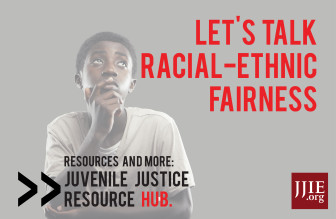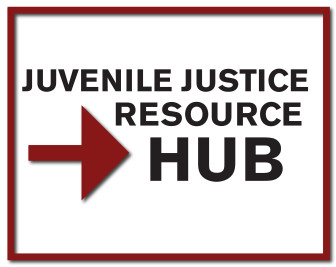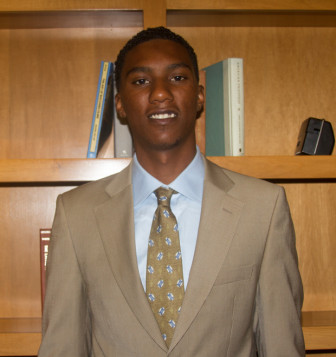 I never chose to be raised by my grandmother in a South Central Los Angeles neighborhood filled with injustice, gang violence and police cruelty. This was my home and the kids on the block were my friends, many of whom eventually joined gangs. Being a native of this environment, I have seen many crazy things and have always felt like I was in the midst of a world war. I have countless friends who are either dead, in jail or doing nothing with their lives. Eventually, I became a victim of this society.
I never chose to be raised by my grandmother in a South Central Los Angeles neighborhood filled with injustice, gang violence and police cruelty. This was my home and the kids on the block were my friends, many of whom eventually joined gangs. Being a native of this environment, I have seen many crazy things and have always felt like I was in the midst of a world war. I have countless friends who are either dead, in jail or doing nothing with their lives. Eventually, I became a victim of this society.
 My first encounter with the police happened during my sophomore year in high school. I was leaving a childhood friend’s apartment with another friend when suddenly two Community Reform Against Street Hoodlums (CRASH) Officers trespassed and entered. Unfortunately, the friend leaving with me was already on their file as a gang member. Due to my personal photos on Myspace they knew who I was before meeting me face-to-face. I was arrested immediately. As far as I could tell, my crime was being with a friend in the vicinity of where we both grew up.
My first encounter with the police happened during my sophomore year in high school. I was leaving a childhood friend’s apartment with another friend when suddenly two Community Reform Against Street Hoodlums (CRASH) Officers trespassed and entered. Unfortunately, the friend leaving with me was already on their file as a gang member. Due to my personal photos on Myspace they knew who I was before meeting me face-to-face. I was arrested immediately. As far as I could tell, my crime was being with a friend in the vicinity of where we both grew up.
We were taken to Southwest Police Station and charged with a status offense, in this case trespassing. The police were able to do this because of a gang injunction law placed in my community of L.A. known as the Jungles. Gang injunctions are court-issued restraining orders against a gang that restricts one documented gang member from being with another within a defined geographic area. This allowed the police to summarily arrest any documented gang members who were together in a gang area. We were visiting, not trespassing. After that day gang unit cops harassed me wherever I went.
Contact with the police was now an every day thing for me and eventually I was placed on probation for multiple gang injunction violations. I became accustomed to the frequent street-frisks, which soon led to the police searching my grandmother’s house several times. It was routine to be stopped outside the mall or walking home from school, whether I was alone or with someone else. I would be stopped every time they saw me, but how is that fair when they were always out roaming? How could I possibly avoid it and still live my life?
On one occasion, CRASH camped out down the street from my high school then swooped on me while I was walking home with a friend from school. Again I was taken to Southwest for a gang injunction violation, but was later released to my father. I guess, as a teenager, I could not truly accept that I could really be punished or locked up for being around people I had known my whole life.
In the spring of 2009, all of my petty run-ins with the law accumulated into a major problem. I was incarcerated for a crime that I did not commit. It was during those two years that I spent fighting my case that I witnessed racial inequality in the system. The experts call this disproportionate minority contact. I find it disturbing that youth of color make up a distinct minority of the youth population, but make up the majority of kids in detention. Kids of color are law enforcement’s center of attention when we are outside of lockup, but very little attention is paid to us when we are on the inside and in the courts.

For more information about the scope of racial-ethnic fairness issues visit our Juvenile Justice Resource Hub.
I was eventually transported to Central Juvenile Hall for a court date along with a van full of minors in orange jumpsuits. During the ride, I discovered that one of the other teenagers, who was the same age and who faced the same charges as me, was sentenced to drug court while I was facing adult court and life in prison. The only difference was his use of drugs and the color of his skin. He was white. I was not angry with him but was deeply disappointed with our juvenile justice system.
If the courts must be involved, a thorough evaluation and investigation of both the crime and background of the person in custody should always be fairly considered in sentencing. African Americans, as well as everyone else in the justice system, should be judged individually with empathy and accountability, and not at all by the color of their skin.
Too many kids of color are targeted by the police on the very streets that are in the comfort zones of their own homes, sometimes before they even think about committing crimes. A kid’s concept, then, of men in badges constantly taking him to jail will drive him to believe that maybe that is where he belongs.
Police should not be able to cruise around all day and look for people to pester and kidnap. That is not justice.
Instead of police asking no questions and taking these kids to jail, gang-interventionist and social workers should be the ones hopping out of the backseats of cars to find out what is going on with at-risk minority youth.
That would be justice.
Alton Pitre is a 23 year-old native of Los Angeles, Calif. He is a juvenile justice ambassador, studies journalism at LA Valley College and was recently accepted to Morehouse College.


Pingback: My unavoidable contact with the police as a youth kid of color | Life is a Jungle
Pingback: For a Kid of Color, Unavoidable Contact With the Cops | Racialicious - the intersection of race and pop culture
Pingback: Today’s Headlines | Streetsblog Los Angeles